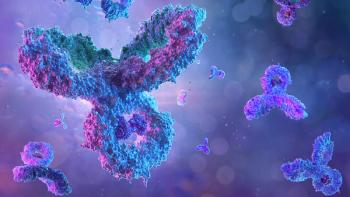
- BioPharm International-05-01-2008
- Volume 21
- Issue 5
Managing the Global Supply Chain
Recent problems with food and pharmaceutical ingredients sourced from China highlight a major disadvantage of our complex international supply chains for food and drug ingredients. A global supply chain offers more opportunities for accidental contamination as well as intentional adulteration and counterfeiting. Sticking to minimal requirements may not be enough.
Recent events with food and pharmaceutical ingredients sourced from China (pet food, heparin, toothpaste, and cough medicine) highlight a major disadvantage of our complex international supply chains for food and drug ingredients. Driven by cost pressure and capacity limitations, many firms have gone overseas to source their materials.
Paula J. Shadle, PhD
Recent adverse events in the United States and Europe have included the sudden illness and death of pets that ate contaminated pet food. More recently, adverse events and deaths were reported in human patients receiving heparin. Investigation of the heparin incidents—currently reported as 62 deaths and hundreds of adverse events—is ongoing and much is yet unknown. All of the adverse events have been linked to contamination of the starting materials with toxic compounds, either through accidental or intentional behaviors.
These events—and others that have occurred in the past—point to the need to have careful controls over food and drug ingredients. Both government and industry now need to determine how best to exercise expanded oversight and improve public safety.
NOT A NEW PROBLEM
The problem of adulterated ingredients is not new. Similar events occurred in the US in 1937 when a cough syrup was formulated with diethylene glycol. Many of our current regulations were created after these events, and these regulations have undoubtedly served to protect us.
In late March 2008, the US Food and Drug Administration and the World Health Organization announced that they are working with Chinese regulators to help them improve their regulations and standards, offer training, and assist China in reaching internationally recognized levels of quality. In the long term, this intervention is the only way to solve the problem and protect public health in the US and abroad.
WHAT CAN BE DONE
To avoid being the next supplier of contaminated products, US firms that use raw materials or active pharmaceutical ingredients that originate abroad should immediately consider taking the following actions:
- Make a list of all materials originating from foreign suppliers, whether purchased directly or indirectly from foreign firms;
- Ask suppliers to notify them of any ingredients of foreign origin, and obtain an agreement to notify them of any future changes in sourcing;
- Review supplier qualification and oversight policies and consider policy changes;
- Identify any suppliers that have never been audited or assessed;
- Identify any materials that are currently on reduced-testing status and immediately trigger full-test status for one or more lots of that material;
- Develop quality agreements with all suppliers that include change notification and traceability verification.
- Perform a scientific review of the methods used for release testing and whether they appear adequate and reasonable;
- Consider adulteration—would it be detectable?
- Are additional methods feasible, appropriate, and useful?
The quality of a medicinal product begins with its ingredients. A global supply chain offers more opportunities for accidental contamination as well as intentional adulteration, counterfeiting, and misbranding. Sticking to minimal requirements may not be enough.
Articles in this issue
over 17 years ago
An Underfunded FDA Fights Backover 17 years ago
India's Clinical Trials Market Acceleratesover 17 years ago
Straightforward Guidanceover 17 years ago
Biomanufacturing Pendulum Swings Toward Overcapacityover 17 years ago
Cumulative Sum Charts for Problem SolvingNewsletter
Stay at the forefront of biopharmaceutical innovation—subscribe to BioPharm International for expert insights on drug development, manufacturing, compliance, and more.





